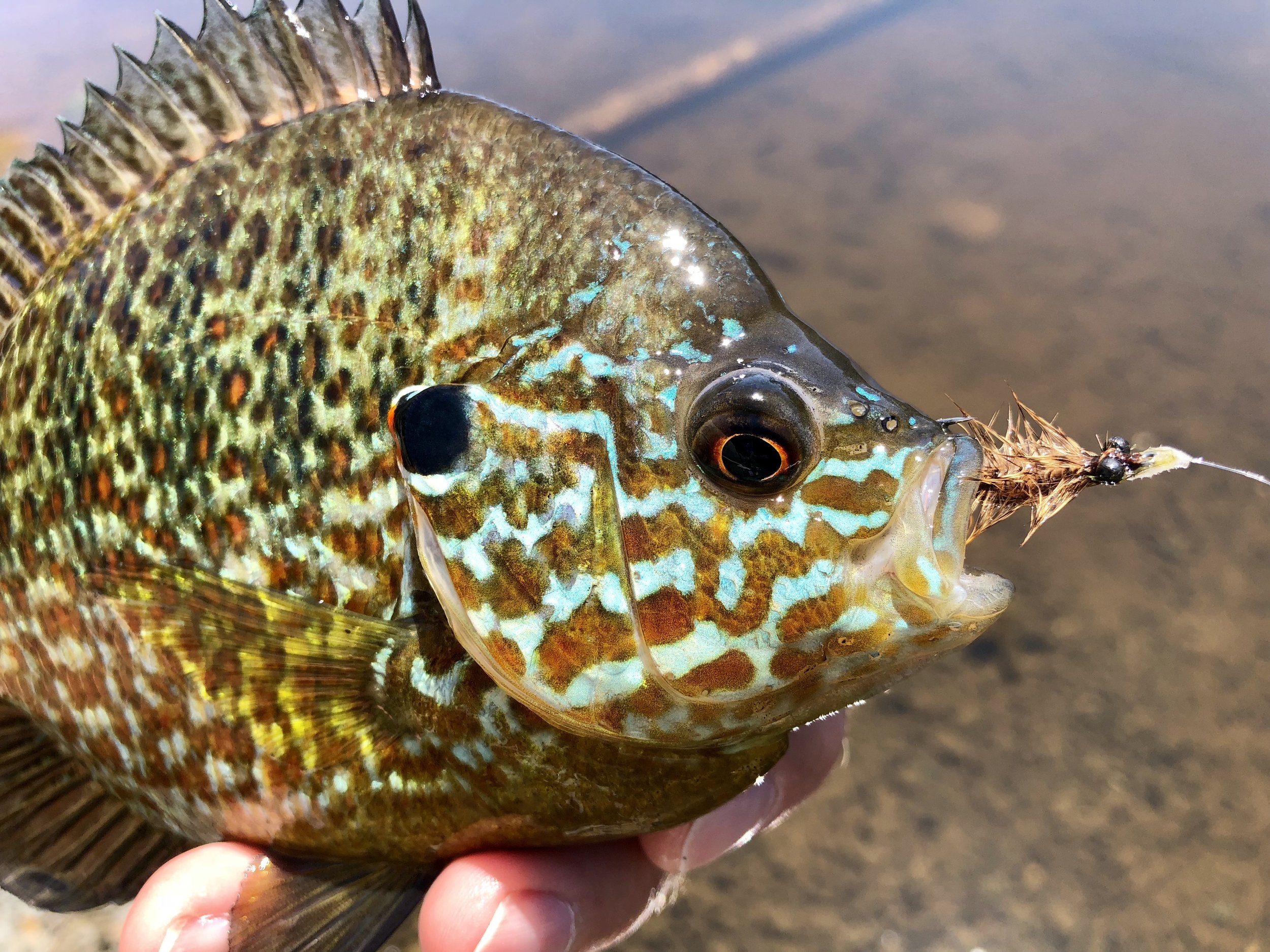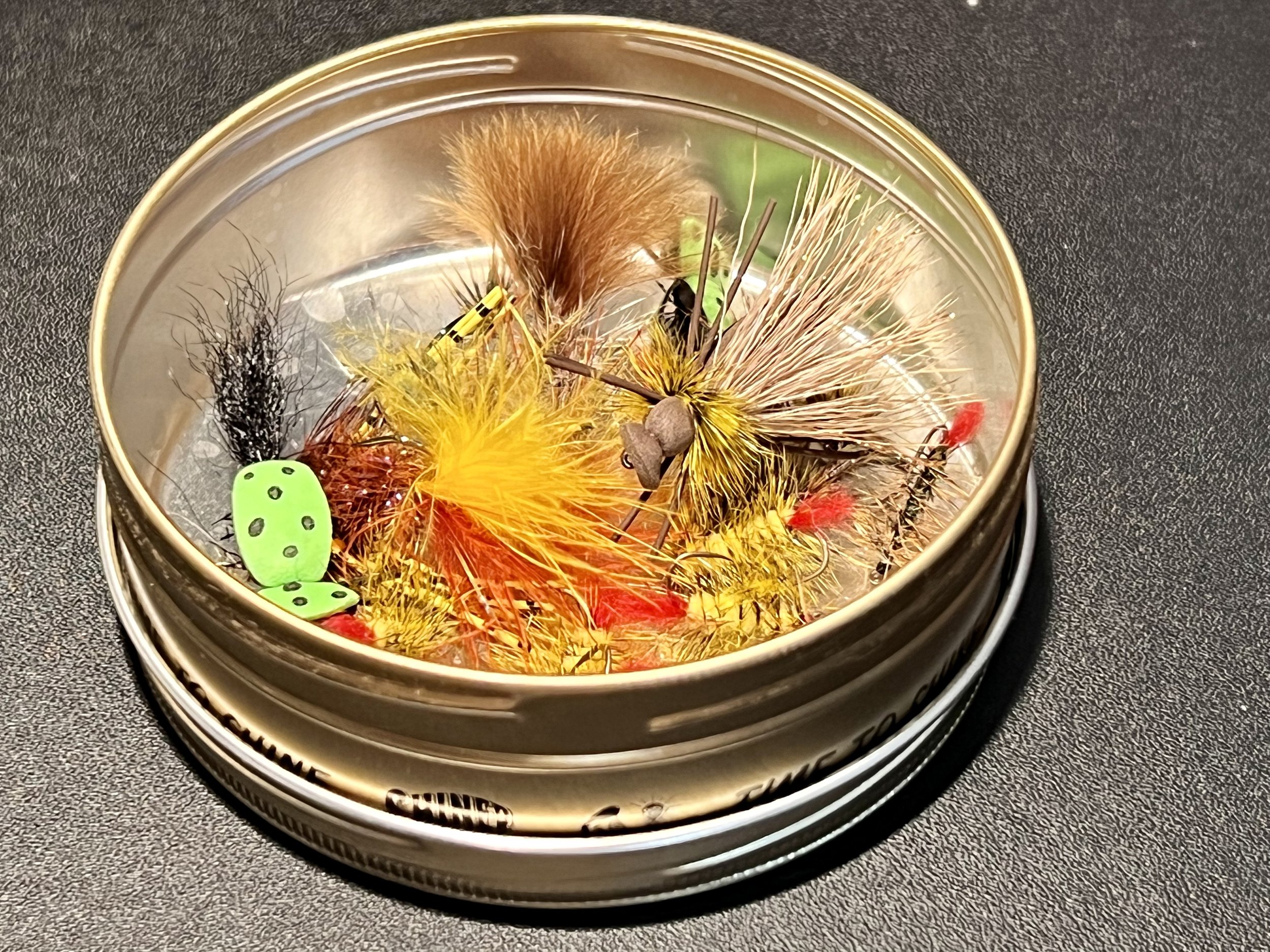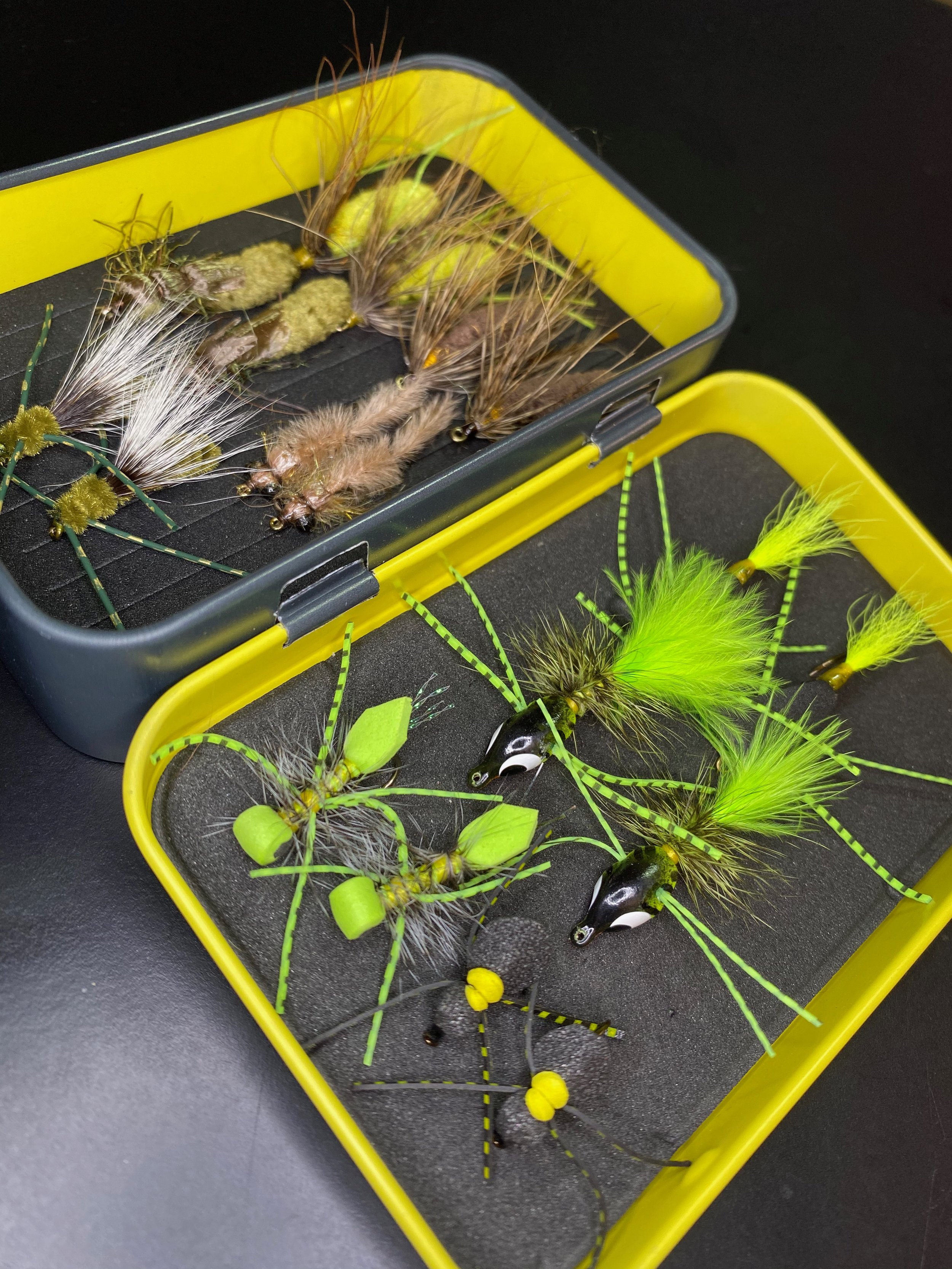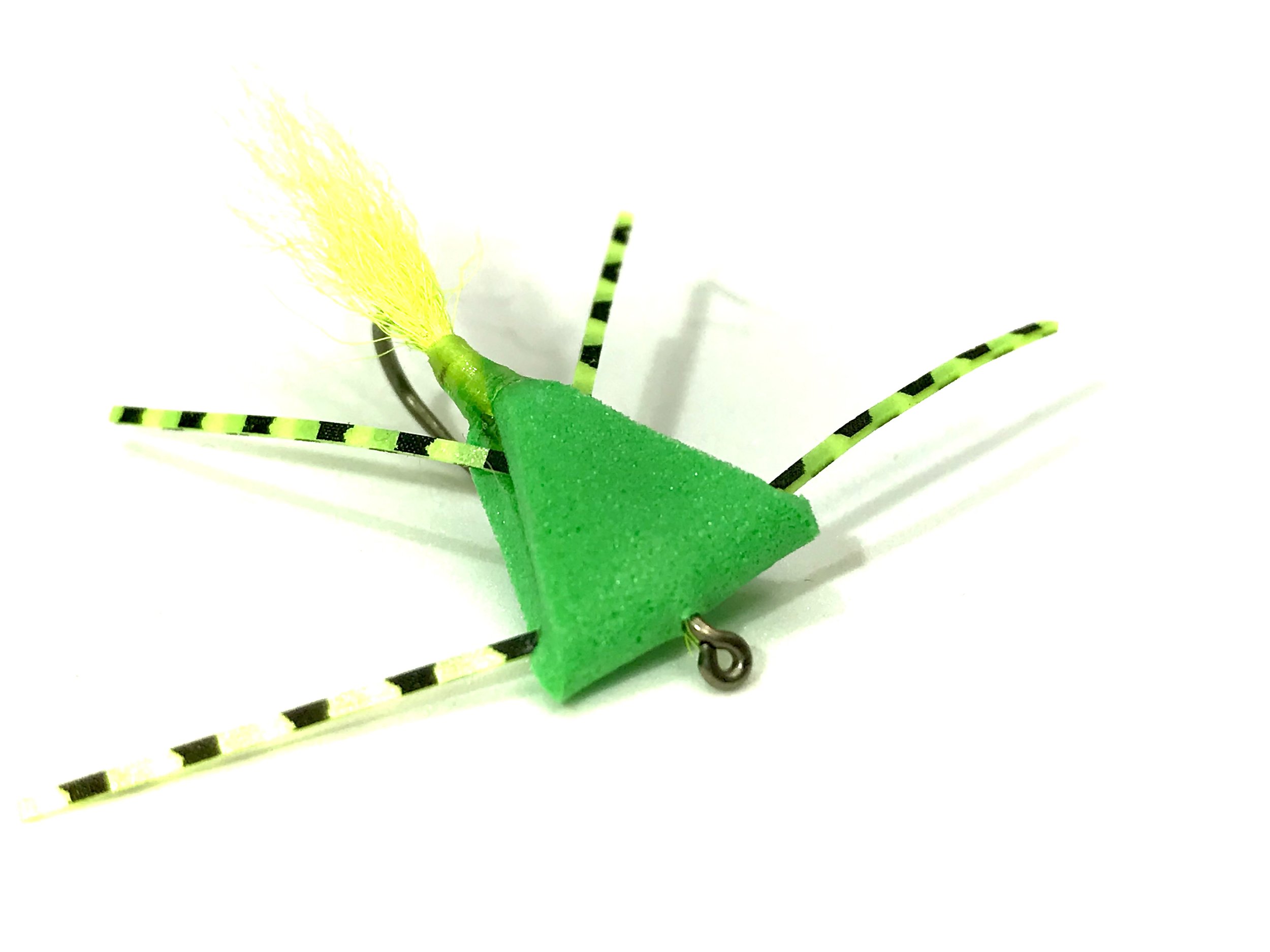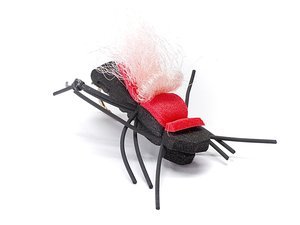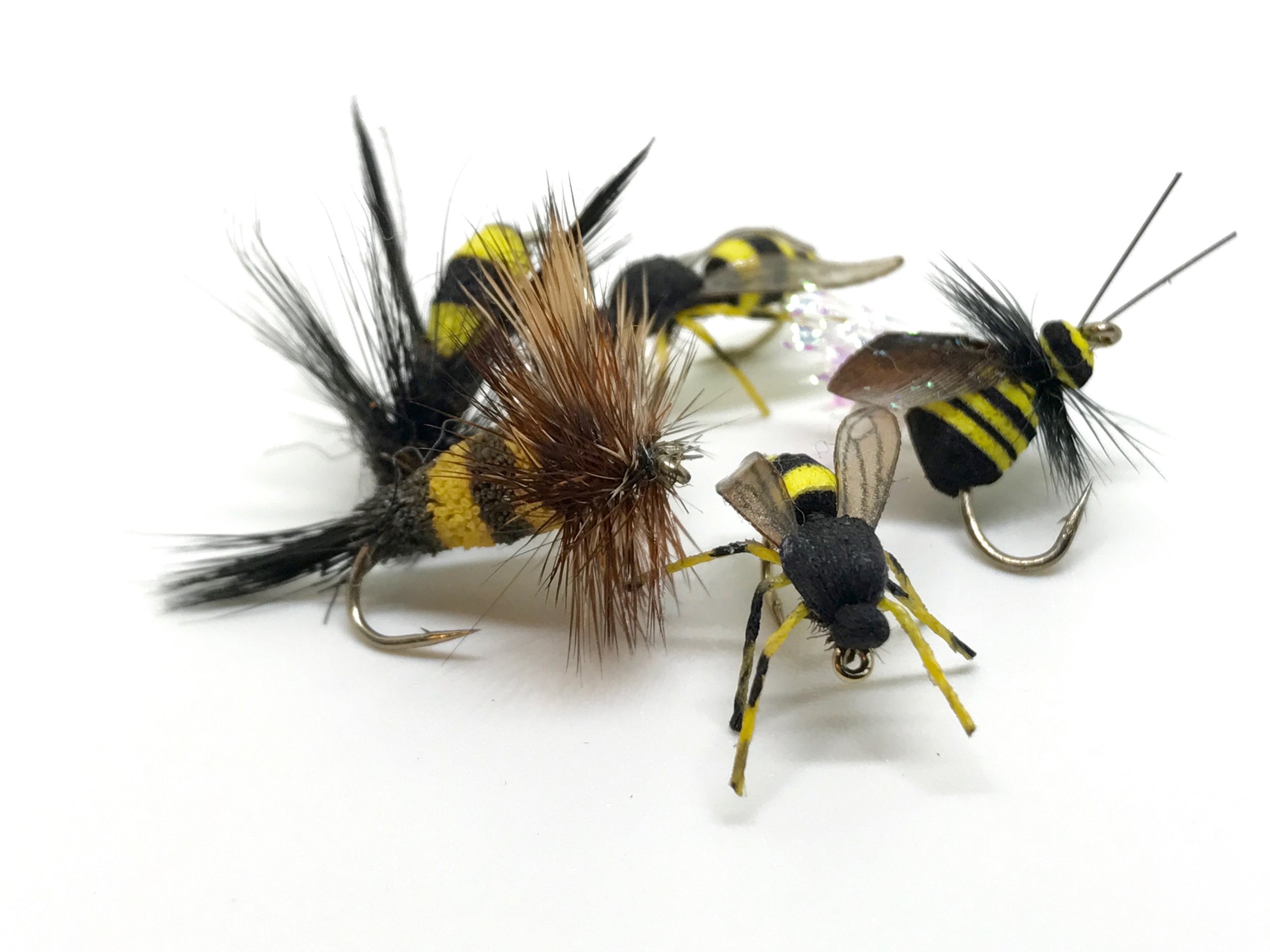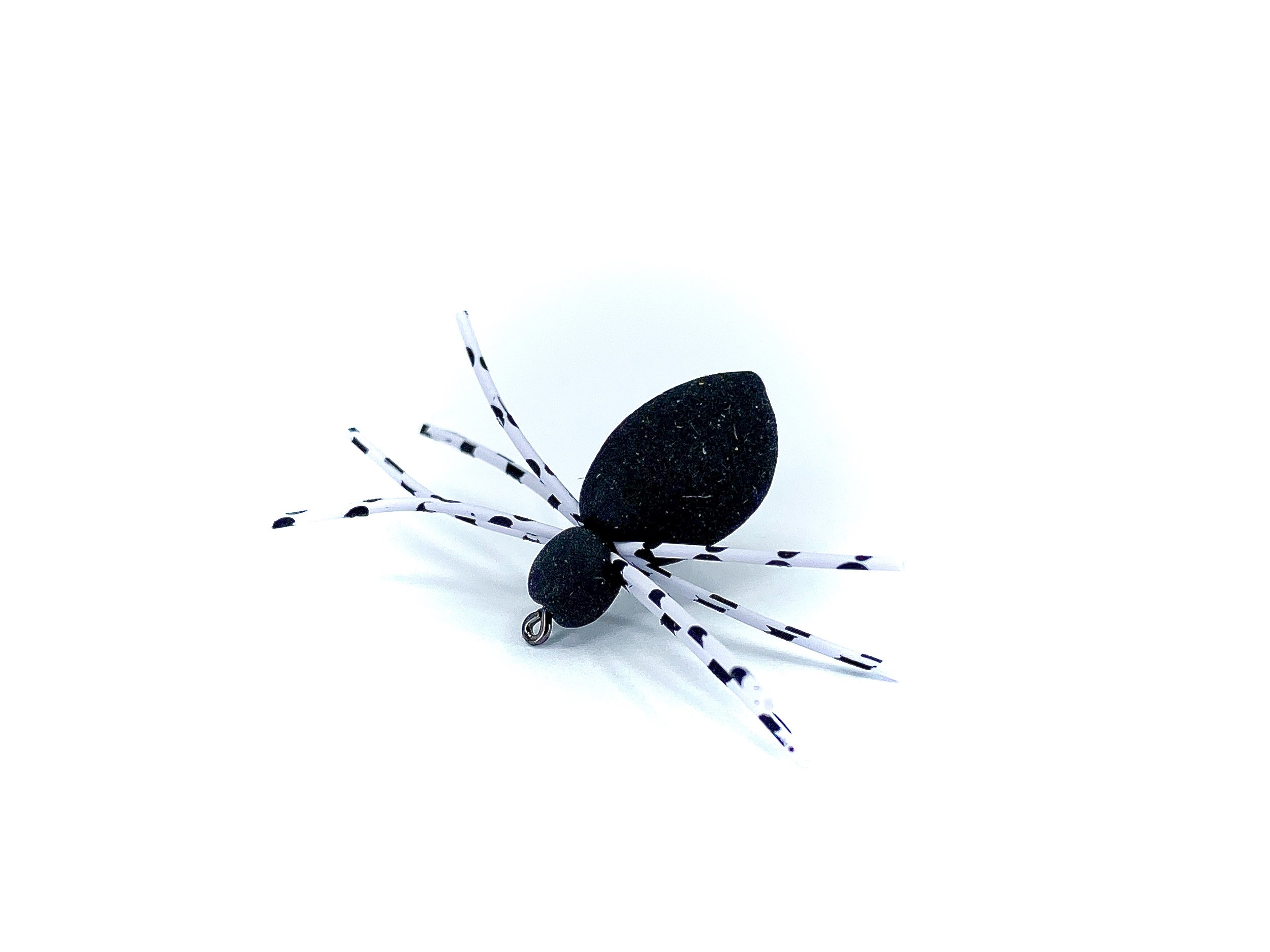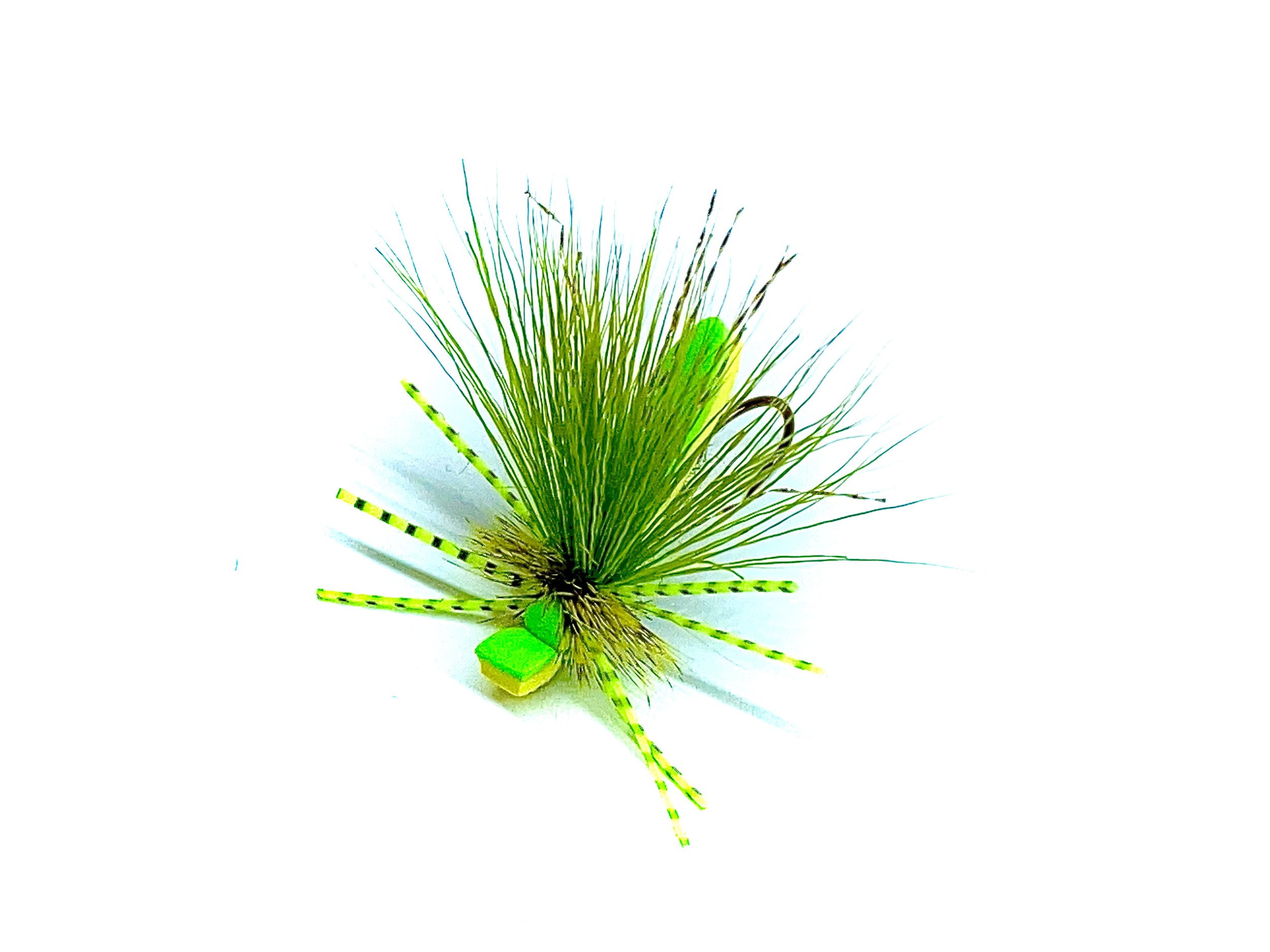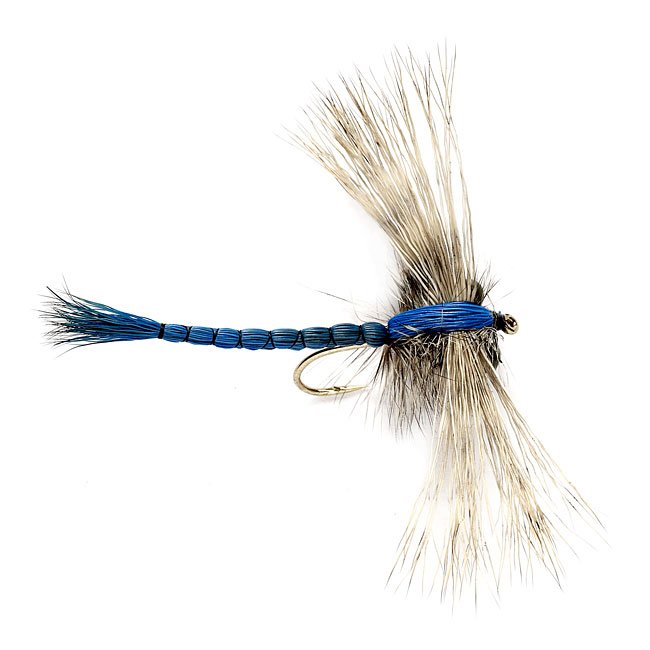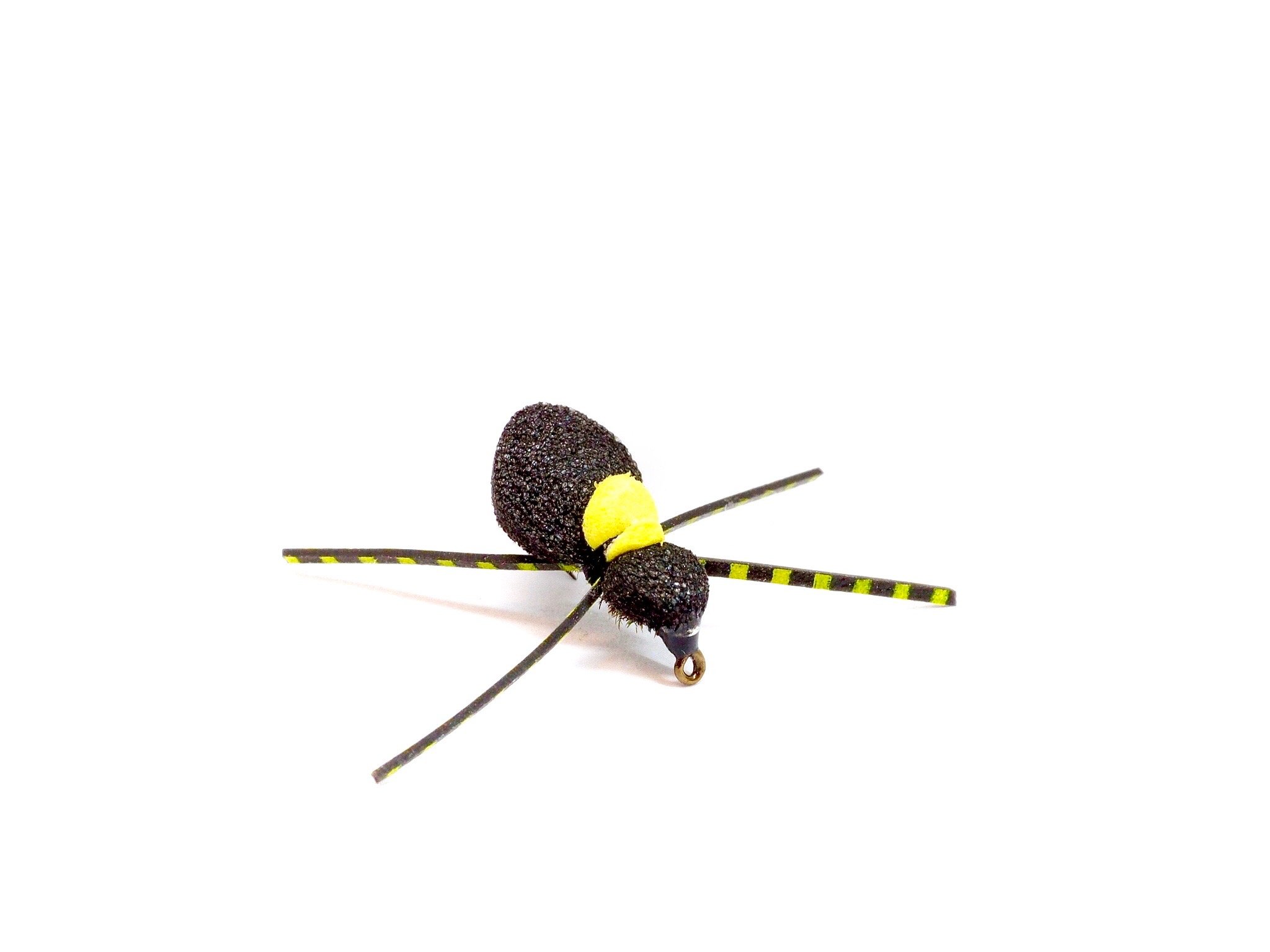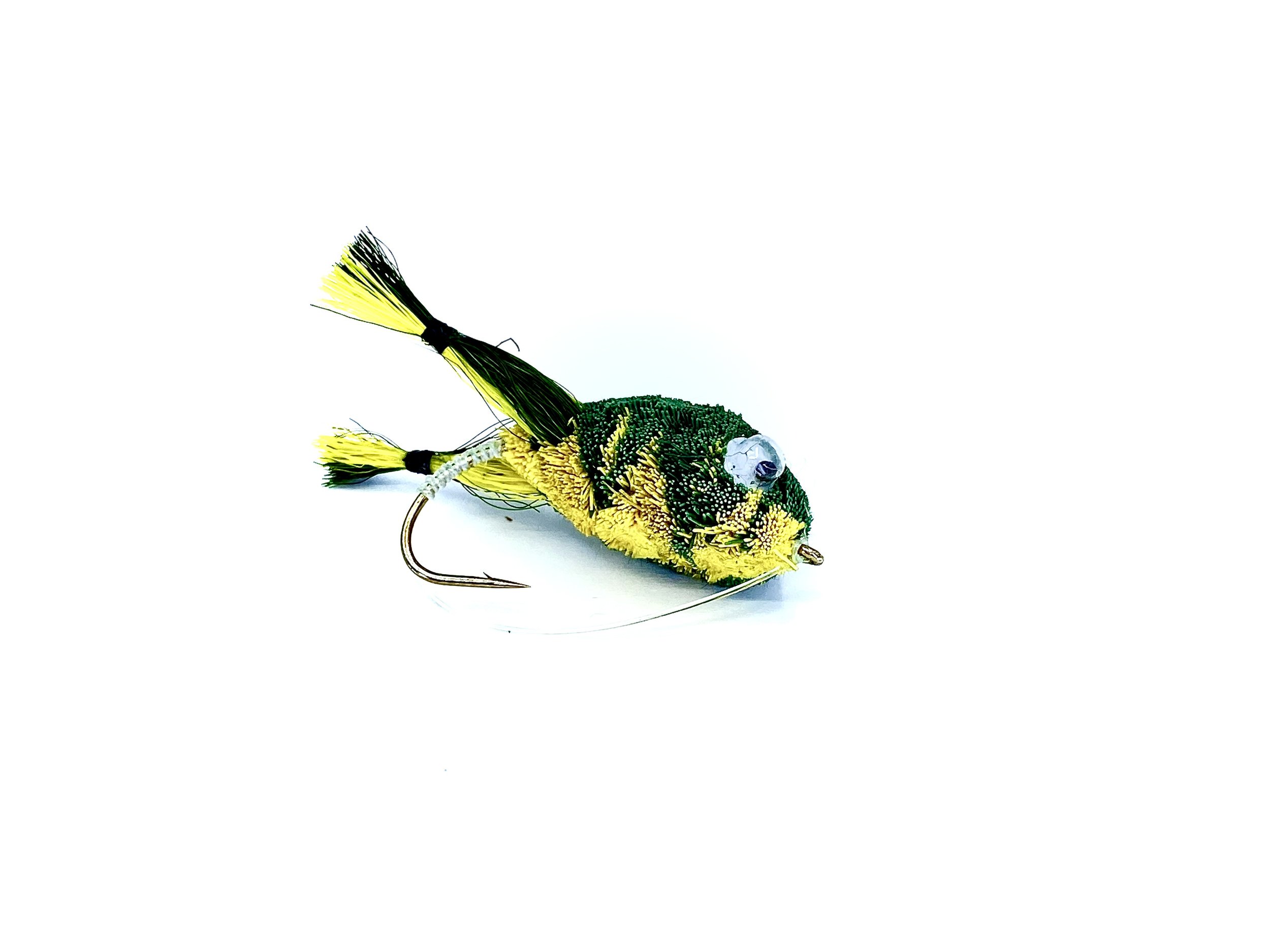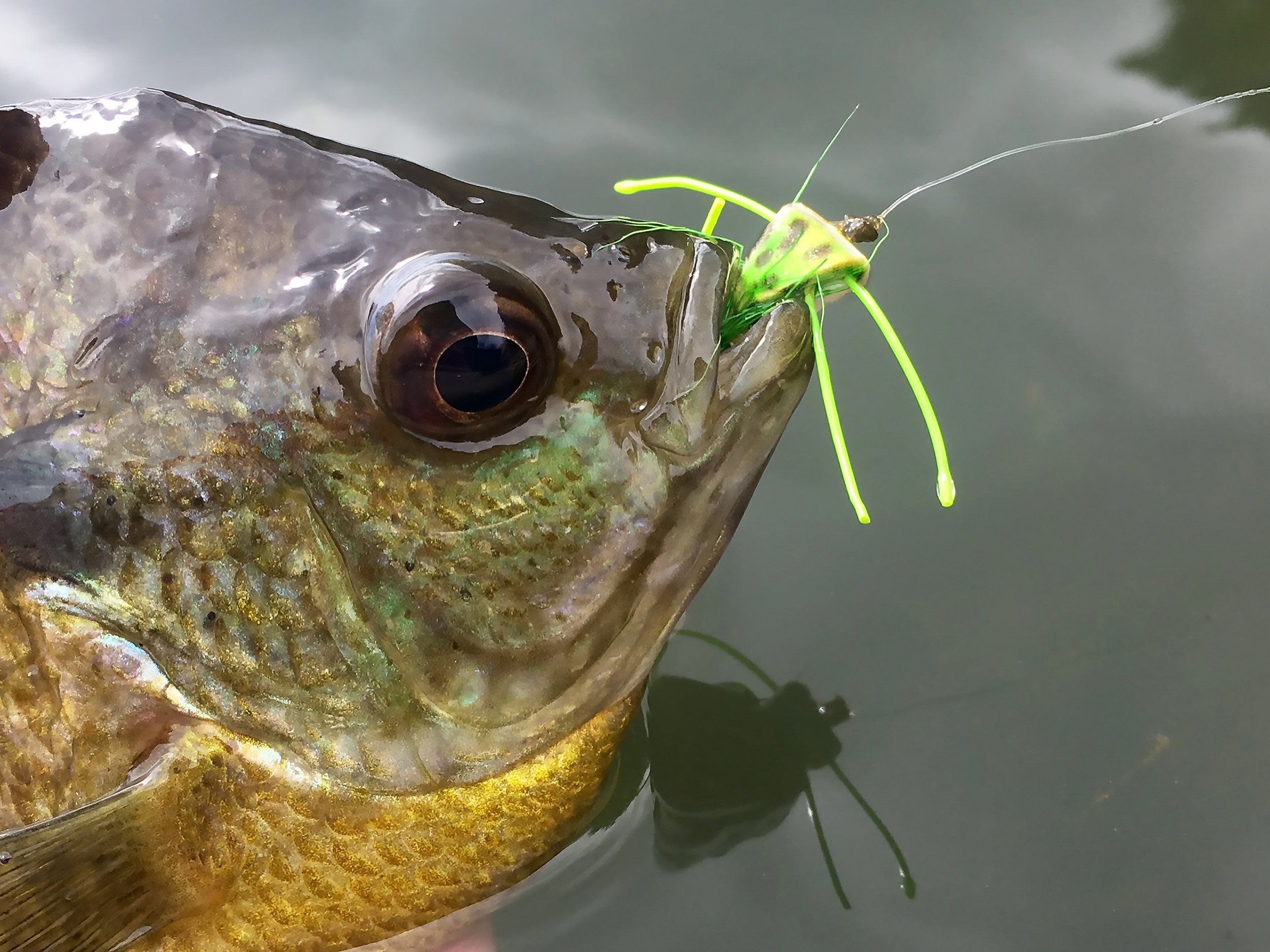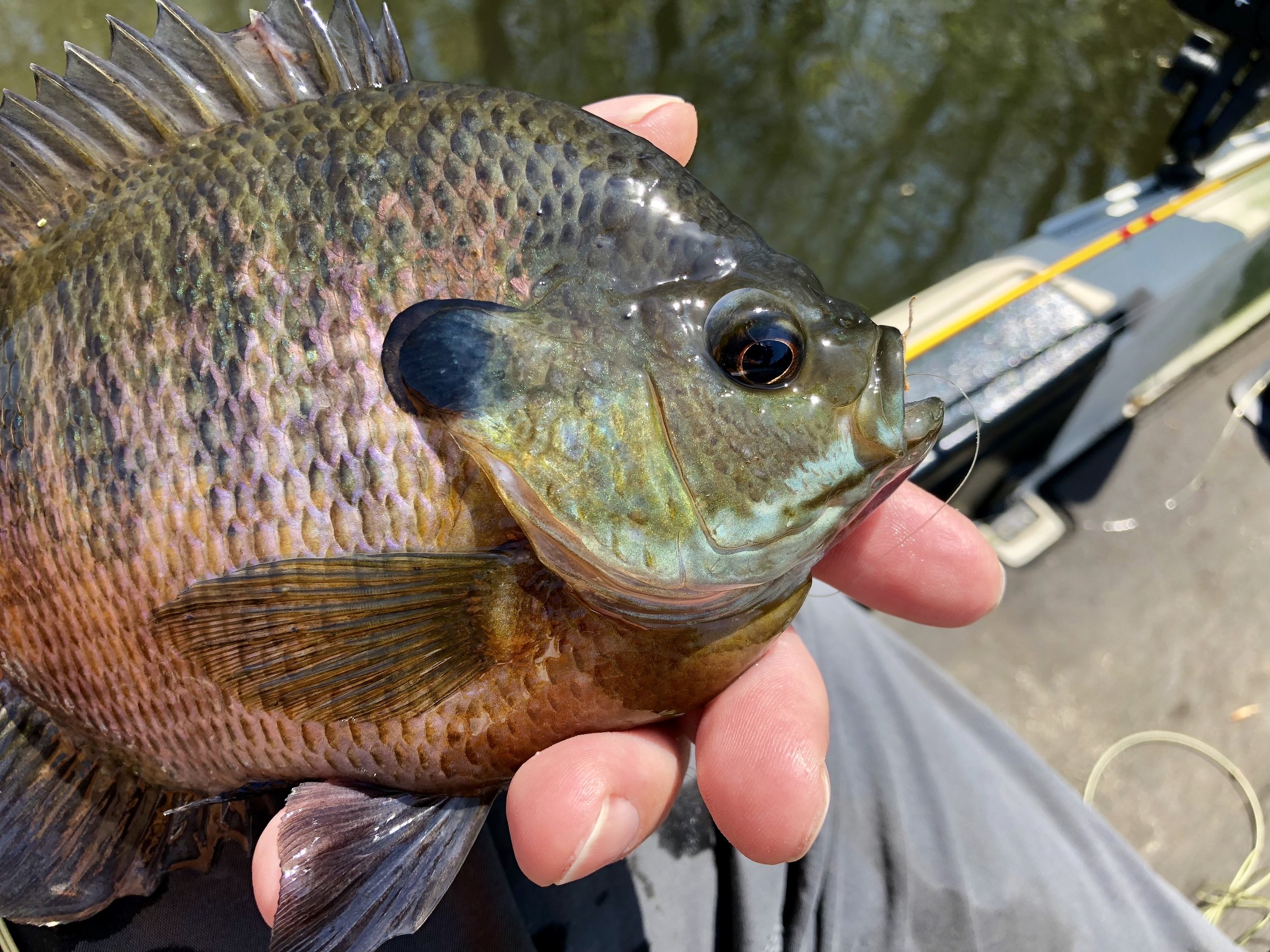One of the things I love about fly fishing for panfish is its simplicity. When I find myself waist-deep in a trout stream, I feel naked unless I carry a vest or sling pack with a 1000 flies and a slew of tools and gadgets. However, I am pretty content to spend an afternoon on a pond with nothing more than a small tin of flies in my pocket. Add to a spool of tippet and a pair of scissor clamp hemostats for crimping barbs, extracting hooks, and cutting tippet, and I'm good to go. Fly fishing for panfish is like that.
An assortment of topwater and sinking flies tucked away in something I can stash in a shirt pocket is all that is needed for an afternoon of fly fishing for panfish.
It's not that panfish are simpletons; well, maybe they are in the springtime when they have procreation on their minds. At other times of the year, they can be just as selective as trout. However, even when they are fussy, I am still comfortable heading out the door with a single fly box in my pocket. That is as long as that fly box contains the proper assortment of flies.
Enter the minimalist fly box. For me to be comfortable leaving a bulging vest behind, this single fly box that can slip into a shirt pocket must contain everything needed to guarantee success on the water. Could you do the same thing fishing for species like trout? I am confident that you can.
If that is the case, then why don't I? It's not like I am not familiar with my quarry. As a fly fishing guide specializing in trout fishing, I spend countless hours pursuing these fish. And I have been fishing for them ever since I picked up a fly rod some 45 years ago. I know I can hit the water with a dozen flies and catch fish, but I don't do it.
A trout probably has a wider variety of food items on its daily menu. Rivers and streams have a wider variety of insects than most lakes and ponds. Trout occasionally feed selectively, keying in on a particular insect and often an insect in a certain stage of development. Carrying flies that imitate all stages of the lifecycle of a single bug (nymph, emerger, dun, spinner, etc.), and you can see how the number of flies quickly adds up. Carrying imitations of other items that may show up on the menu like fish, leeches, worms, eggs, terrestrial insects (the list goes on), and the number of boxes multiply.
But do you really need accurate imitations of every stage of every insect? Probably not. I once met an angler that fished only three flies. He fished a size 14 Adams for when the fish were feeding on the surface, a size 12 Hares Ear nymph for when they were not, and a size six black Wooly Bugger for those times he wanted to fish a streamer. I should mention that this fellow caught plenty of fish. Although he only had three patterns in his fly box, he knew how to use them.
A small fly box that will fit in a shirt pocket loaded with an assortment of flies to fish top to bottom.
The Minimalist Fly Box
If I am going to head out with only a single fly box in my pocket, that box needs to contain an assortment of flies that will allow me to fish in a wide variety of conditions. So let's break down the contents of such a fly box.
Let's discuss the fly box. There are many fly boxes to choose from; in fact, you can select a box that will hold hundreds of flies. Not exactly minimalist, and it certainly won't fit in a shirt pocket. However, to fish comfortably, I want a box that can do just that - fit in a shirt pocket. That fly box must be small enough to carry comfortably but big enough to hold bulky poppers and foam bugs. The Panfish On The Fly Fly Tin was designed for just this purpose. This small box is deep enough for panfish poppers and foam bugs, but it still disappears in a shirt or pants pocket. Despite the compact design of the box, it still holds plenty of flies due to its double-sided design that allows you to keep flies on both the bottom and the lid of the box.
The Flies
The ideal assortment of flies should allow you to fish from top to bottom in a wide variety of conditions. My minimalist fly box contains flies that will enable you to do just that. The flies will change based on the season. For example, in warmer months, when fish are more apt to feed on the surface, there will be more surface patterns; in colder months, there will be more streamers, nymphs, and wet flies.
Topwater Patterns:
Like most fly fishers, I love the take of a fish on the surface, so when appropriate, there will always be a good assortment of topwater patterns in my fly box. A basic rundown of topwater flies would look like this:
* Triangle Bugs
* Foam Bugs
* General attractors
* Terrestrial imitations
* Gurglers
* Poppers
* Damsel and Dragons
* Tiny frogs
I usually try to have a least two of each type of fly in the box. I try and stay on top of replacing flies lost to fish or snags at the end of each fishing session, so the box is always topped off.
Topwater patterns like the Triangle Bug are perfect for panfish. They float forever, are durable and fish can’t resist them.
Subsurface Patterns:
You will catch more and often larger fish when you fish below the water’s surface.
My subsurface selection consists of nymphs, streamers, wet flies, and soft hackles. Fish do most of their feeding below the surface. Therefore, if you want to increase your catch rate, it often pays to present your flies where the fish are most likely to eat them, and that is below the surface.
Nymphs:
The Panfish Wiggler is a fly designed specifically for big bluegills and other panfish.
Panfish are usually not as picky as trout, so when it comes to nymph patterns, I typically don't attempt to imitate specific insects, with the only exception being damselfly and dragonfly nymphs because their appearance is so different from other aquatic insects. A well-rounded nymph selection will always include a few panfish-specific patterns like panfish wigglers, bream killers, and bully spiders.
Wet Flies:
Soft hackles will take panfish twelve months out of the year!
Wet flies are my favorite flies to use for all species of panfish. You can fish them any time of year, and they always catch fish. They are a go-to pattern for me during the colder times of the year. Whether traditional winged patterns or soft hackles, there will always be an assortment of wets in my minimalist fly box.
Streamers:
A streamer like this Baby Bluegill is a terrific pattern for panfish!
Many anglers don't consider streamers when fly fishing for panfish. However, during certain times of the year, small streamers are deadly. You can't go wrong with a so-called down wooly bugger or wooly worm; both patterns will catch a ton of fish. Add to that a few specialty streamers like my Baby Bluegill pattern, the James Wood Bucktail, the Hornberg Special (a versatile fly that can be fished as a dry or a wet fly!), or streamer such as the Stayner Ducktail, and you will be well prepared.
If I carried all of the flies I mentioned so far, you would be fishing out of a large fly box that probably would not fit in a shirt pocket which is a requirement of mine when it comes to scaling things down. So, of course, one option is to scale down the list of flies. Even with fewer flies, you will still be well equipped for an afternoon's fishing. Just make sure you have a few patterns from each category.
The other option is to stick with the larger box and find a more efficient way to carry it. I have fallen in love with the Yakoda Supply's Utility pouch. This small bag attaches to your belt, wader suspenders, or a strap on your float tube and will hold a good-sized fly box that will allow you to increase the number of flies you can carry if you are nervous about heading out with only a dozen or two flies. This pouch also gives you a handy place to attach your nippers, hemostats, extra tippet, and floatant.
Tenkara
Tenkara keeps things simple
No conversation on simplifying fly fishing would be complete without mentioning tenkara. Tenkara, as many readers of this blog know, is a fixed-line form of fly fishing that originated in Japan hundreds, possibly thousands of years ago. Although this method of fishing was developed to catch small trout in high gradient mountain streams, tenkara lends itself perfectly to fishing for panfish. Since long casts are seldom needed when fishing for bluegills and other panfish species, you are not handicapped if you hit the water with a tenkara rod in your hands. Most tenkara rods on the market today are ideal for targeting panfish. These scrappy fighters will bend a tenkara rod to the cork, and the long flexible rod lets you enjoy the fight. To further the simplicity aspect of tenkara fishing, many tenkara experts fish with only one fly, perhaps tied in a few different sizes. Tenkara, simply put, is fly fishing simplified!
Are you looking for the perfect minimalist fly box? Let me build one for you! Use the contact button below to get started. First, we can discuss where you are fishing and the flies that fit the bill. Then I'll get a box loaded up with custom-tied flies heading your way!
